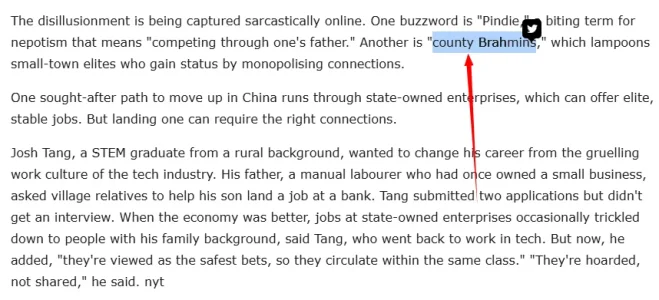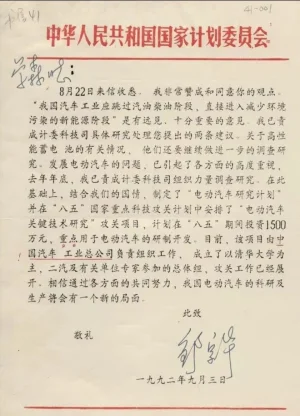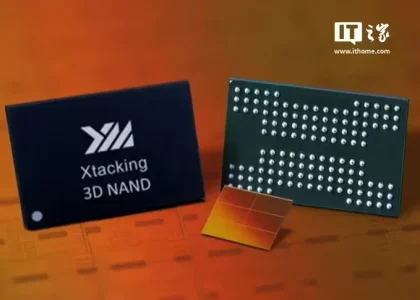You are using an out of date browser. It may not display this or other websites correctly.
You should upgrade or use an alternative browser.
You should upgrade or use an alternative browser.
Chinese Economy Watch (6 Viewers)
- Thread starter rockdog
- Start date
More options
Who Replied?@helin The popular term “county Brahmins” finally back to the original place ...


 timesofindia.indiatimes.com
timesofindia.indiatimes.com


Better life out of reach: How the Chinese dream is slipping away - Times of India
China News: Since the 1980s, more than 800 million Chinese have risen out of poverty. China's middle class expanded from virtually no one to about 400 million. Vi.
- Joined
- Jul 3, 2024
- Messages
- 785
- Likes
- 372
@helin The popular term “county Brahmins” finally back to the original place ...
View attachment 43311

Better life out of reach: How the Chinese dream is slipping away - Times of India
China News: Since the 1980s, more than 800 million Chinese have risen out of poverty. China's middle class expanded from virtually no one to about 400 million. Vi.timesofindia.indiatimes.com
Contributions from Indian culture
- Joined
- Jul 3, 2024
- Messages
- 785
- Likes
- 372
July 14 -- China’s imports and exports expanded 2.9 percent in the first six months from a year earlier, demonstrating strong resilience despite continued external pressures and challenges, according to the latest data.
The total value of foreign trade reached CNY21.8 trillion (USD3 trillion) in the six months ended June 30, according to data released today by the General Administration of Customs. Exports surged 7.2 percent to CNY13 trillion (USD1.8 trillion), while imports tumbled 2.7 percent to CNY8.8 trillion (USD1.2 trillion).
In June alone, foreign trade climbed 5.2 percent year on year to CNY3.85 trillion (USD530 billion), with exports jumping 7.2 percent to CNY2.3 trillion (USD320 billion) and imports advancing 2.3 percent to CNY1.5 trillion (USD210 billion).
China’s trade with more than 190 countries and regions saw growth in the first half, said Wang Lingjun, vice minister of the General Administration of Customs. Sixty-one trading partners logged over CNY50 billion (USD6.9 billion) in trade with China, five more than a year earlier.
China’s total trade with the European Union climbed 3.5 percent in the first six months from a year earlier to CNY2.82 trillion (USD390 billion). Exports to the EU jumped 7.9 percent to CNY1.92 tillion (USD270 billion), with products like textiles, home appliances and laptops seeing robust growth. Imports from the EU slumped 4.8 percent to CNY900 billion (USD120 billion). More than 60 percent of China’s imports of healthcare products, bags and jewelry are from the EU.
Trade with the Association of Southeast Asian Nations surged 14.3 percent over the period to CNY3.67 billion (USD510 billion), while exports to Vietnam jumped 21 percent and that to Thailand 23.4 percent. Exports to Japan climbed 6 percent to CNY560 billion (USD76.7 million).
China’s trade with Africa expanded 14.4 percent to CNY1.18 tillion (USD160 billion), with exports surging 23.3 percent to CNY7.4 billion (USD1 billion), said Lv Daliang, spokesperson for the General Administration of Customs.
China has granted zero tariffs to all least-developed countries that have diplomatic ties to China since Dec. 1 last year, Lv said. Next, China plans to extend this zero-tariff policy to all 53 African nations that it has diplomatic relations with, using its large market to drive shared development.
Trade with the United States, though, took a hit due to Washington’s so-called “reciprocal tariffs.” Total trade tumbled 9.3 percent to CNY2.08 trillion (USD287 billion). Exports to the US slumped 9.9 percent to CNY1.5 trillion (USD214 billion), while imports fell 7.7 percent to CNY530.3 billion (USD73 billion).
Private companies led the way in terms of exports during the first half, with shipments jumping 8.3 percent to CNY8.5 trillion (USD1.1 trillion). The second quarter marked the 21st straight quarter of year-on-year trade growth for China’s private sector, Wang said.
Foreign-invested firms exported CNY3.5 trillion (USD480 billion) worth of goods, up 5.4 percent, and state-owned enterprises exported CNY968.7 billion (USD134 billion) worth, a gain of 3.8 percent.
Exports of high-tech products jumped 9.2 percent in the first half, marking nine consecutive months of growth, Lv added. Exports of high-end machine tools, ships and maritime engineering equipment all surged by over 20 percent, while exports of instruments and gauges soared 14.7 percent.
Chinese companies are also customizing products for different markets to much acclaim. For instance, they have developed solar-powered phones for regions with electricity shortages and they have rolled out dust-proof, high-temperature resistant engines for those who live in desert regions.
China and the US are working hard to implement agreements from the London framework talks, Wang said. He expressed hope that the US would continue to ‘meet China halfway’ to ensure that co-operation is the main theme of trade relations between the two countries and to help restore fairness and openness to global trade, ultimately contributing to global economic recovery and growth.
The total value of foreign trade reached CNY21.8 trillion (USD3 trillion) in the six months ended June 30, according to data released today by the General Administration of Customs. Exports surged 7.2 percent to CNY13 trillion (USD1.8 trillion), while imports tumbled 2.7 percent to CNY8.8 trillion (USD1.2 trillion).
In June alone, foreign trade climbed 5.2 percent year on year to CNY3.85 trillion (USD530 billion), with exports jumping 7.2 percent to CNY2.3 trillion (USD320 billion) and imports advancing 2.3 percent to CNY1.5 trillion (USD210 billion).
China’s trade with more than 190 countries and regions saw growth in the first half, said Wang Lingjun, vice minister of the General Administration of Customs. Sixty-one trading partners logged over CNY50 billion (USD6.9 billion) in trade with China, five more than a year earlier.
China’s total trade with the European Union climbed 3.5 percent in the first six months from a year earlier to CNY2.82 trillion (USD390 billion). Exports to the EU jumped 7.9 percent to CNY1.92 tillion (USD270 billion), with products like textiles, home appliances and laptops seeing robust growth. Imports from the EU slumped 4.8 percent to CNY900 billion (USD120 billion). More than 60 percent of China’s imports of healthcare products, bags and jewelry are from the EU.
Trade with the Association of Southeast Asian Nations surged 14.3 percent over the period to CNY3.67 billion (USD510 billion), while exports to Vietnam jumped 21 percent and that to Thailand 23.4 percent. Exports to Japan climbed 6 percent to CNY560 billion (USD76.7 million).
China’s trade with Africa expanded 14.4 percent to CNY1.18 tillion (USD160 billion), with exports surging 23.3 percent to CNY7.4 billion (USD1 billion), said Lv Daliang, spokesperson for the General Administration of Customs.
China has granted zero tariffs to all least-developed countries that have diplomatic ties to China since Dec. 1 last year, Lv said. Next, China plans to extend this zero-tariff policy to all 53 African nations that it has diplomatic relations with, using its large market to drive shared development.
Trade with the United States, though, took a hit due to Washington’s so-called “reciprocal tariffs.” Total trade tumbled 9.3 percent to CNY2.08 trillion (USD287 billion). Exports to the US slumped 9.9 percent to CNY1.5 trillion (USD214 billion), while imports fell 7.7 percent to CNY530.3 billion (USD73 billion).
Private companies led the way in terms of exports during the first half, with shipments jumping 8.3 percent to CNY8.5 trillion (USD1.1 trillion). The second quarter marked the 21st straight quarter of year-on-year trade growth for China’s private sector, Wang said.
Foreign-invested firms exported CNY3.5 trillion (USD480 billion) worth of goods, up 5.4 percent, and state-owned enterprises exported CNY968.7 billion (USD134 billion) worth, a gain of 3.8 percent.
Exports of high-tech products jumped 9.2 percent in the first half, marking nine consecutive months of growth, Lv added. Exports of high-end machine tools, ships and maritime engineering equipment all surged by over 20 percent, while exports of instruments and gauges soared 14.7 percent.
Chinese companies are also customizing products for different markets to much acclaim. For instance, they have developed solar-powered phones for regions with electricity shortages and they have rolled out dust-proof, high-temperature resistant engines for those who live in desert regions.
China and the US are working hard to implement agreements from the London framework talks, Wang said. He expressed hope that the US would continue to ‘meet China halfway’ to ensure that co-operation is the main theme of trade relations between the two countries and to help restore fairness and openness to global trade, ultimately contributing to global economic recovery and growth.
- Joined
- Jul 3, 2024
- Messages
- 1,697
- Likes
- 2,288
View: https://www.youtube.com/watch?v=7c0ZOEknN9w
Israel & the US Just Exposed China’s Military SCAM
Last edited:
- Joined
- Jul 3, 2024
- Messages
- 785
- Likes
- 372

'Ghar ke sher, global zero': Raghuram Rajan asks why India copies well but fails to lead in innovation like TikTok or Porsche
Raghuram Rajan cautions that India's projected status as the world's third-largest economy will be hollow without innovation. He argues that despite state support, India lacks global product leaders due to risk-averse capitalism and protectionist policies. Rajan urges fostering a competitive...
- Joined
- Jul 3, 2024
- Messages
- 785
- Likes
- 372
The world's first cotton laser topping robot successfully developed in China’s Xinjiang
(Global Times) 14:29, July 10, 2025
The cotton laser topping robot. Photo: Xinjiang Daily
Recently, a cotton laser topping robot jointly developed by Xinjiang University and Xinjiang Eavision Robotic Technologies Co., Ltd., was officially declared a success. Verified by the Xinjiang Uygur Autonomous Region's Agricultural and Rural Mechanization Development Center, this groundbreaking robot represents the world's first application of laser technology in cotton topping—a crucial farming task now entering the high-tech era, Xinjiang Daily reported Wednesday.
As the industry's first robot equipped with solid-state LiDAR for cotton topping, it integrates cutting-edge LiDAR and vision fusion technologies, achieving major breakthroughs in navigation accuracy and environmental adaptability. This innovation pushes cotton topping robotics to new heights.
The robot was developed over three years of intensive research. Through countless experiments, the team combined advanced technologies such as sensors, machine vision, and laser control with Xinjiang's unique planting model.
After multiple field tests, the robot demonstrated a 98.9 percent accuracy rate in identifying cotton apical buds, a plant damage rate of less than 3 percent, and a topping success rate exceeding 82 percent, with further improvements still possible. Once fully optimized, its operational efficiency is expected to reach 6 to 8 acres per hour—over 10 times faster than manual labor.
"The core challenge was enabling the robot to track moving targets and strike precisely, eliminating missed or incorrect cuts common in traditional topping methods," explained Professor Zhou Jianping from Xinjiang University. "It's like hitting a moving target with a moving gun." Cotton plants vary in height, and airflow from the robot can cause them to sway. However, the robot's "smart eye" rapidly and accurately locates each plant's apical bud. A high-powered blue laser then instantly burns and deactivates the bud, effectively breaking the plant's apical dominance and redirecting nutrients to boost cotton yield.
Compared to traditional mechanical cutting or chemical topping, laser topping is non-contact and non-damaging, significantly reducing harm to cotton plants and environmental impact. It also operates efficiently day or night, according to the Xinjiang Daily.
"Cotton topping has long been the final hurdle in achieving full mechanization of cotton production," said Pei Xinmin, a researcher at the Agricultural and Rural Mechanization Development Center. "This world-first laser topping robot's emergence means China is on the verge of realizing fully mechanized cotton farming."
- Joined
- Jun 27, 2024
- Messages
- 1,832
- Likes
- 11,495
Just saying, this is also the same guy who said that India should concentrate solely on services and not take manufacturing seriously.
'Ghar ke sher, global zero': Raghuram Rajan asks why India copies well but fails to lead in innovation like TikTok or Porsche
Raghuram Rajan cautions that India's projected status as the world's third-largest economy will be hollow without innovation. He argues that despite state support, India lacks global product leaders due to risk-averse capitalism and protectionist policies. Rajan urges fostering a competitive...economictimes.indiatimes.com
He's completely biased politically against Modi and he's a boot licker of the opposition Congress.
- Joined
- Jul 3, 2024
- Messages
- 785
- Likes
- 372
Just saying, this is also the same guy who said that India should concentrate solely on services and not take manufacturing seriously.
He's completely biased politically against Modi and he's a boot licker of the opposition Congress.
I kown him.
In China many years ago, there were also many similar statements.
For instance, why don't we have any successful global brands in China?
Pointing out the problem is quite easy.
- Joined
- Jun 27, 2024
- Messages
- 1,832
- Likes
- 11,495
Innovation is a consequence of risk taking ability. Risk taking doesn't come naturally when you have no financial stability and are worried about your family's next meal.I kown him.
In China many years ago, there were also many similar statements.
For instance, why don't we have any successful global brands in China?
Pointing out the problem is quite easy.
With increasing wealth and a modicum of financial stability, a section of people will take risks which'll lead to innovation.
Applies to China, India etc any country.
Had Bill Gates, Jeff Bezos etc been worried about their next meal in their early 20's, pretty sure they'd have taken a desk job instead of innovating.
- Joined
- Jul 3, 2024
- Messages
- 785
- Likes
- 372
Innovation is a consequence of risk taking ability. Risk taking doesn't come naturally when you have no financial stability and are worried about your family's next meal.
With increasing wealth and a modicum of financial stability, a section of people will take risks which'll lead to innovation.
Applies to China, India etc any country.
Had Bill Gates, Jeff Bezos etc been worried about their next meal in their early 20's, pretty sure they'd have taken a desk job instead of innovating.
Yes, innovation requires suitable conditions.
This is why industrialization is so important.
Even though it has so many drawbacks
- Joined
- Jul 3, 2024
- Messages
- 785
- Likes
- 372
Sun Yat-sen had written a letter to Henry Ford in 1924.
At this time, Sun Yat-sen was the top leader of the Kuomintang in southern China. He invited Ford to invest in China and establish an industrial empire in China that was larger than his American enterprises. At this time, Ford Motor Company was still the leader in the American automotive market.
However, an assistant from Ford's office sent a brief rejection letter, stating that the letter had been received, "But we would like to inform you that Mr. Ford has no plans to visit China in the near future."

Sun Yat-sen had written a letter to Henry Ford in 1924.
At this time, Sun Yat-sen was the top leader of the Kuomintang in southern China. He invited Ford to invest in China and establish an industrial empire in China that was larger than his American enterprises. At this time, Ford Motor Company was still the leader in the American automotive market.
However, an assistant from Ford's office sent a brief rejection letter, stating that the letter had been received, "But we would like to inform you that Mr. Ford has no plans to visit China in the near future."
View attachment 43402
China‘s chief N-bomb and H-bomb scientist Tsien Hsue-shen, wrote the letter to central government to promote EV tech R&D in 1992, since hopeless to catch western brands on ICE vehicle, and got approved by PM of central government.
He is also the 1 of 5 founders of Jet Propulsion Laboratory in CalTech, among world's top 10 best engineers.

Qian Xuesen - Wikipedia


- Joined
- May 9, 2025
- Messages
- 495
- Likes
- 2,703
Fake chini tofu GdP…
Cheen is not even growing at 2% let alone 5
- Joined
- Jul 3, 2024
- Messages
- 785
- Likes
- 372
Chief Scientist of Yangtze Memory Technologies: China's 3D Flash Memory Chip Technology Has Advanced from Lagging Behind to Catching Up
On July 6, it was reported that on the morning of July 3, Peking University held the 2025 Graduate Commencement Ceremony and Degree Awarding Ceremony. Huo Zongliang, alumnus of the Computer Science and Technology Department, Microelectronics major, class of 1994, and Ph.D. alumnus of the Microelectronics Department, class of 2000, served as an alumni representative to speak and offered blessings and valuable advice to the graduates.

Huo Zongliang stated that Peking University is closely linked to national rejuvenation and that graduates should choose to walk alongside the nation and share a common destiny with it, dedicating themselves to industries that the country needs.
Huo mentioned, "The blood of Peking University students flows with the genes of patriotism and global responsibility. By engaging in industries that the country needs, we can more easily realize our life's value. The storage industry was not the most popular sector at the time of my graduation, but I firmly believe it is an industry that the country needs. Therefore, what we must do is to settle down, not fear sitting on the sidelines, avoid seeking quick returns, and silently strive on the path of independent research and development."
Huo Zongliang expressed, "In the past decade at Yangtze Memory, our team has endured hardships and forged ahead, enabling China's 3D flash memory chip technology to develop from nothing to something, from lagging behind to catching up, achieving leapfrog development."
Yangtze Memory Technologies was established in July 2016 and is a domestic semiconductor integrated circuit company focused on 3D NAND flash memory and storage solutions. It offers products such as 3D NAND flash, embedded storage, mobile hard drives, solid-state drives, and launched the only retail storage brand, Zhi Tai, in 2021. In April 2020, Yangtze Memory announced the successful development of the third generation of TLC/QLC flash memory, with the X2-6070 model being the first third-generation QLC flash memory, boasting the highest I/O speed, storage density, and single-chip capacity in the industry at the time of its release.
On July 6, it was reported that on the morning of July 3, Peking University held the 2025 Graduate Commencement Ceremony and Degree Awarding Ceremony. Huo Zongliang, alumnus of the Computer Science and Technology Department, Microelectronics major, class of 1994, and Ph.D. alumnus of the Microelectronics Department, class of 2000, served as an alumni representative to speak and offered blessings and valuable advice to the graduates.

Huo Zongliang stated that Peking University is closely linked to national rejuvenation and that graduates should choose to walk alongside the nation and share a common destiny with it, dedicating themselves to industries that the country needs.
Huo mentioned, "The blood of Peking University students flows with the genes of patriotism and global responsibility. By engaging in industries that the country needs, we can more easily realize our life's value. The storage industry was not the most popular sector at the time of my graduation, but I firmly believe it is an industry that the country needs. Therefore, what we must do is to settle down, not fear sitting on the sidelines, avoid seeking quick returns, and silently strive on the path of independent research and development."
Huo Zongliang expressed, "In the past decade at Yangtze Memory, our team has endured hardships and forged ahead, enabling China's 3D flash memory chip technology to develop from nothing to something, from lagging behind to catching up, achieving leapfrog development."
Yangtze Memory Technologies was established in July 2016 and is a domestic semiconductor integrated circuit company focused on 3D NAND flash memory and storage solutions. It offers products such as 3D NAND flash, embedded storage, mobile hard drives, solid-state drives, and launched the only retail storage brand, Zhi Tai, in 2021. In April 2020, Yangtze Memory announced the successful development of the third generation of TLC/QLC flash memory, with the X2-6070 model being the first third-generation QLC flash memory, boasting the highest I/O speed, storage density, and single-chip capacity in the industry at the time of its release.
Users who are viewing this thread
Total: 2 (members: 0, guests: 2)
Latest Replies
-
Idiotic Musings from the West
- FalconSlayers
-
Operation Sindoor & Aftermath
- FalconSlayers
-
Indian Air Force: News & Discussions
- Kontakt5
-
Jokes Thread
- liberalredditor
-
Indian Small Arms & Weapons
- vampyrbladez
-
Brown Coolie Musings
- realsumo
-
Indian Culture and society
- Varoon4
